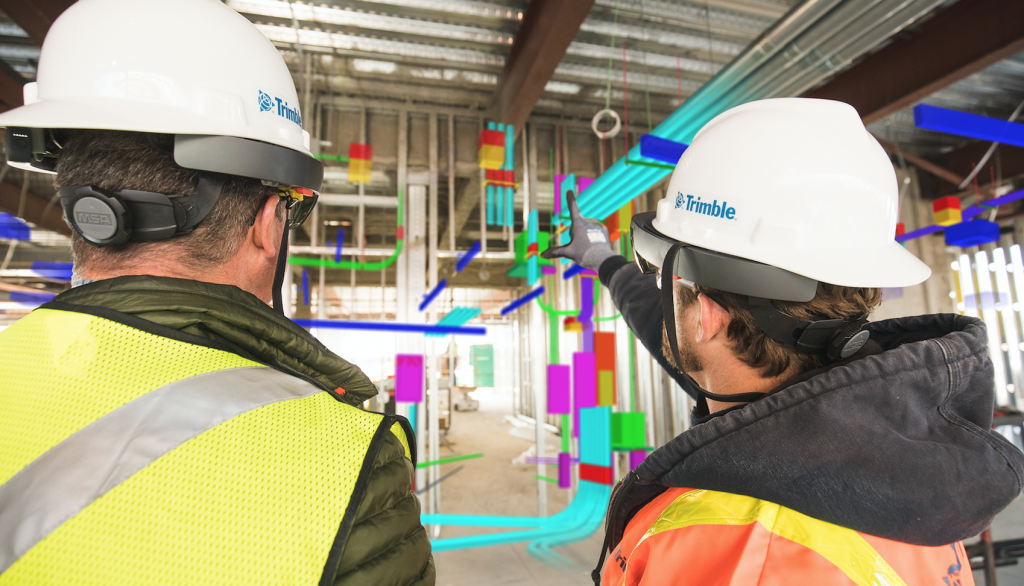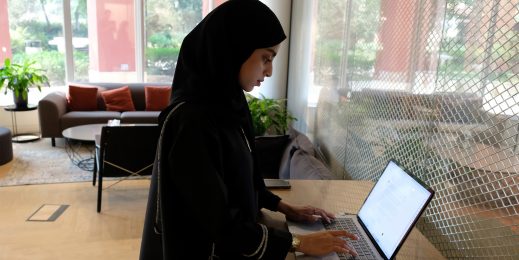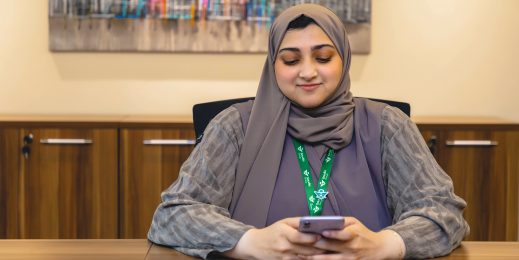
Reconstructive surgery, holographic conference calls and more
The power of mixed reality
The way we work is changing.
In a world where many businesses have five generations of diverse employees spread around the globe, the challenge of bringing people together while bridging generational and cultural gaps is one that is faced daily – and technology, combined with the right culture, can help.
Mixed reality (MR) is one innovation that is already transforming the way that organisations work, helping them remain competitive while solving the obstacles presented by the modern workplace.
Merging the physical and digital worlds using devices such as Microsoft HoloLens to overlay virtual objects over physical spaces, mixed reality has the potential to help customers and businesses across the globe do things that until now, have never been possible.
The technology allows businesses and employees to complete crucial tasks faster, safer, and more efficiently, while offering new ways to connect customers and partners. Coupled with Microsoft 365 and other tools such as AI and machine learning, mixed reality enables truly transformative experiences for the modern workplace.
“Every organisation needs a mixed reality strategy, because digital transformation is happening so quickly,” says Leila Martine, Director of Product Marketing at Microsoft. “In the UK, for example, 53 percent of companies see significant digital transformation happening within the next two years. Despite this, we have an issue where companies aren’t investing in tools for their own employees.”
Holograms and mixed reality have moved on from futuristic potential to present-day reality, and the technology has already transformed the way many industries operate.
Field technicians and engineers in a variety of industries are, for example, using HoloLens in conjunction with Microsoft’s Remote Assist preview app to collaborate with remote experts, regardless of their location or devices used.
Using HoloLens and Microsoft Teams – a platform which allows real-time voice, video and text communication in addition to integrating with Microsoft 365 apps – an engineer repairing complex machinery at a factory can receive 3D annotations and visual queues by remote technicians, overlaid over the relevant physical parts. In this way, expert help can be supplied in an instant, even in the remotest of locations
In addition to announcing the preview of Remote Assist at Microsoft Build, the company also launched the preview of Microsoft Layout – an application which allows HoloLens users to import 3D models, scale them, and place them in real environments, to help companies design room layouts with a more realistic sense of space and scale. Both Remote Assist and Microsoft Layout are available to download now.
Holographic healthcare and training
Another area where mixed reality is having a substantial impact is its use in ground-breaking healthcare applications.
One example is a research programme at Imperial College’s Surgical Innovation Centre. Headed by Dr. Philip Pratt, the HoloLens-based solution provides reconstructive surgeons with the ability to overlay 3D scans of patients’ blood vessels and areas of trauma, over the same physical areas the scans are based on.
In this way, surgeons can gain an accurate 3D-representation of key blood vessels in donor areas, while avoiding any sensitive areas which may cause complications during the procedure.
Results of surgeries using this system have shown that surgery duration can be significantly reduced, thanks to HoloLens’ ability to provide surgeons with more useful information ahead of time, reducing the overall strain on the patient.
Beyond the operating theatre, mixed reality can also help doctors visualise a variety of ailments, while also offering easy to grasp 3D visuals to patients so that they better understand their conditions.
Hamburg-based apoQlar is an innovative medical application company which specializes in creating ground-breaking medical imaging techniques. Using HoloLens, for example, a doctor can view a 3D hologram of a brain MRI scan, ‘peeling back’ the various layers of tissue and observing the position of a tumour in its precise 3D location, before marking it with annotations, if they so wish.
Other applications also include 3D views of spine models, for accurate diagnoses of injuries, or dentistry, where locations of dental fixings can be visualised ahead of surgery.
Medical applications such as these also play a large role in education, providing students with powerful visual learning tools, such as those used by Case Western Reserve University in the USA.
Mixed reality’s educational applications aren’t limited to medical fields – companies are using systems based on HoloLens to train workers in complex areas such as airplane engine repairs (in the case of Rolls Royce), or building specialised batteries from scratch – the latter being a use-case already deployed by BAE Systems.
The British multinational defence, security, and aerospace company partnered with software company PTC to create a solution for easily creating interactive mixed reality experiences for HoloLens in hours, and at a tenth of the cost.
Using guided step-by-step mixed reality instructions and 3D models, its first-line workers were able to assemble battery cells in less time, and BAE was able to train new people 30-40% more efficiently.
Construction and collaboration
Mixed reality has also proven to be an invaluable tool in the construction and architectural industry. US-based Trimble, for example, is a company which provides leading mixed reality solutions for customers in a wide variety of fields, including architecture, engineering, construction, mining and more.
One of its latest solutions, Trimble Connect, uses mixed reality technology to transport on-screen 3D content into the real world using HoloLens, providing project stakeholders with enhanced 3D design review, coordination, collaboration, and project management facilities.
Using the system, construction workers can overlay virtual wiring and pipes precisely over their real-world positions, while allowing remote communication and collaboration capabilities and in-depth context to what would otherwise be a complex series of less-relatable 2D diagrams.
Trimble has also worked with architects, such as the world-famous Paulo Mendes da Rocha, to bring three-dimensional architectural creations to life, allowing HoloLens users to walk in and around 3D models of stunning buildings – an experience that is impossible to match on a regular screen alone.
In addition to allowing local collaboration in building sites, factory floors, meeting rooms and more, there are other mixed reality solutions for HoloLens that allow multiple people to work together no matter where they’re located.
Kazendi’s HoloMeeting application is an example of a virtual holographic remote meeting solution which allows users’ virtual avatars to view and interact with the same 3D models in real-time, with audio, video and annotation support, mimicking the same experience one would find in a physical meeting room.
The solution allows co-workers from across the world to replicate true in-person collaboration in a manner unmatched by any other conferencing technology available today, and is set to become a standard method of communication in the future, especially as more and more companies embrace modern methods of remote working.
The future
The applications and impact of mixed reality are limitless, and the development of immersive technology such as mixed reality is growing rapidly. Recent research has shown that in the UK alone, the immersive technology sector could reach a turnover of £1billion this year, with 1,000 immersive specialist companies employing 4,500 people.
While Microsoft is providing the technology to these immersive companies, it is the industry experts themselves – those that are pushing the boundaries and developing incredible solutions – who will drive the future of transformation for us all.
“If we look back, we see how people were working from a single office, with a single PC on their desk. Now we see what the modern workplace looks like – the teams are different, and the tools are different,” states Ryan Asdourian, Windows and Surface BG Lead at Microsoft.
“At Microsoft, we think about empowering every person and organisation, and how we can use technology in different ways to think about how companies can take advantage of technology in a way they weren’t before.”
For more information on HoloLens, please click here.














